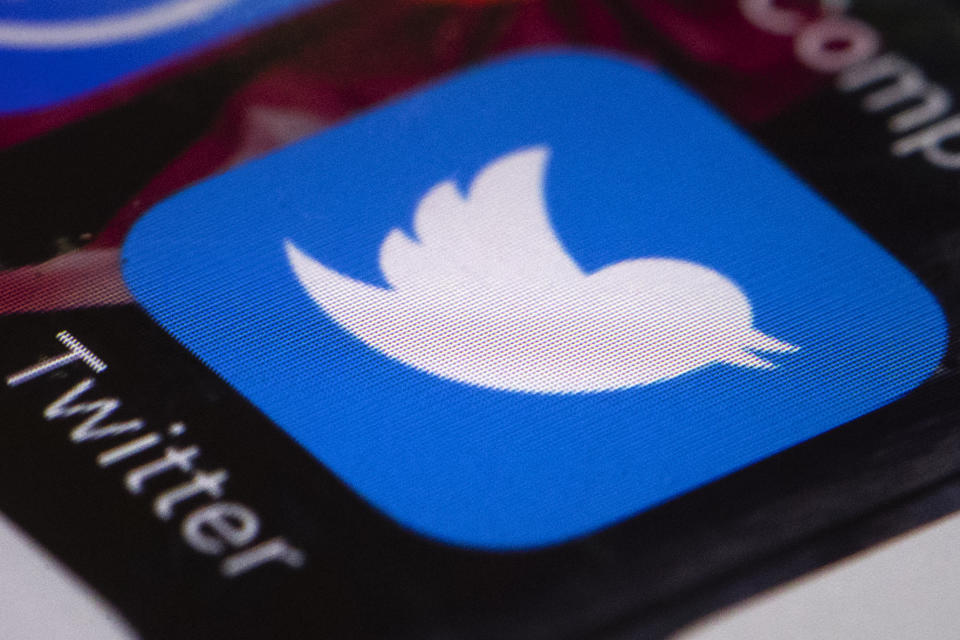New study finds 66% of shared links on Twitter came from bots

If you thought you were going to be among the first to tweet out this post, save the effort: A bot probably beat you to it.
This unflattering-to-humans assessment comes from a new study by the Pew Research Center that found 66% of tweeted links to popular news stories came from what appear to be automated accounts.
In some categories, bot banter constitutes even more of the Twitter (TWTR) chatter: Pew’s “Bots in the Twittersphere” study found that 76% of links to sports content and 90% of links to pornography came from accounts judged to be automated. Those figures far exceed other estimates of the bots on Twitter — estimates that have already subjected the San Francisco firm to criticism.
How to spot a bot
The Pew Research Center — funded mostly by the Pew Charitable Trusts, a Philadelphia foundation — opted to gauge the role of bots not just by counting accounts, but also by tracking links.
Researchers Stefan Wojcik, Solomon Messing, Aaron Smith, Lee Rainie, and Paul Hitlin began by assembling a list of 2,315 popular sites and the 1,156,837 English-language tweets from 140,545 accounts that linked to those sites between July 27 and Sept. 11 last year.
They then turned to a third-party tool, Botometer, to pick out the bots. This service, developed by two groups of Indiana University researchers, analyzes a Twitter account’s tweets and other activity to compute the probability of it being automated or human.
An appendix to the Pew study explains that the authors settled on a 0.43 threshold — that is, a 43% Botometer score — after checking the tool’s assessments against human inspection of a sample group of accounts.
That may be the study’s weakest link. Botometer gave my @robpegoraro Twitter account — which I promise you is 100% written by me — a 37% score. Botometer’s own FAQ warns that a score between 40 and 60% suggests “our classifier is uncertain about the classification.”
Good and bad bots
But that’s the basic problem with bots on Twitter: Depending on how they’re coded and controlled, they can provide a convincing impersonation of a human brain’s output, but almost none of them identify themselves accordingly. The Pew report notes that only 636 accounts of 140,545 studied had a bio disclosing the lack of a human behind a keyboard.
That doesn’t make bots evil. They can provide a valuable service by automating certain chores — for instance, @TrumpsAlert tracks the likes, follows and unfollows of President Donald Trump and his family members. They can call out human foibles at all hours; for a few happy years, @StealthMountain did nothing but correct tweets that spelled “sneak peek” as “sneak peak.”
(Botometer gave @TrumpsAlert a 47% score and handed out a 59% score to @StealthMountain.)
The bots in the news, however, don’t perform constructive or amusing activities. They attempt to push popular opinion in certain directions.
Russian influence operations, for example, have leaned heavily on Twitter bots. Hamilton 68, an online dashboard maintained by the Alliance for Securing Democracy, tracks hashtags pushed by “Russia-linked influence networks on Twitter.”
News coverage has emphasized the Russian-bots angle so often that in February, Hamilton 68 co-founder Clint Watts implored people to give it a rest in a Buzzfeed interview.
Russians aren’t alone in employing bots for online persuasion. Last November, Marc Owen Jones, a professor at Exeter University’s Institute of Arab and Islamic Studies, documented how a flood of bot-like Twitter accounts amplified a tweet by President Trump backing Saudi Arabia’s leadership.
The Pew study, however, did not attempt to identify where geographically the bots originated from. “It is a complicated task to determine the true locations of the individuals controlling accounts,” Stefan Wojcik said in an e-mail sent by a Pew publicist, adding that this “wasn’t something we were focused on specifically in this study.”
More where this came from
Earlier attempts to assess the bot population on Twitter by indexing accounts have found numbers much lower than 66% link-sharing metric of the Pew study.
Last March, a study from researchers at the University of Southern California and Indiana University found that as many of 15% of Twitter accounts could be bots — at the time, almost 48 million.
Twitter itself has warned in SEC filings such as its latest annual report that its efforts to combat “malicious automation” have put a dent in its user metrics.
And while Washington has yet to do much but talk — Congress hasn’t even moved to hold online campaign ads to the same standards as those on TV or radio — states may act on their own.
A new bill in California would make bots into a subject for state law. This bill from Sen. Robert Hertzberg, a Democrat representing the San Fernando Valley, would make it illegal to use a bot online “with the intention of misleading and without clearly and conspicuously disclosing that the bot is not a natural person.”
It would require social networks to act promptly — meaning within 72 hours of notice from a user — to decide whether to identify or boot a bot.
More clarity about who’s talking to you on social media would help — that’s been obvious since the 1993 New Yorker “On the internet, nobody knows you’re a dog” cartoon. But if the Pew study proves anything, it should be that it’s difficult to make this judgment at any sort of scale.
Email Rob at rob@robpegoraro.com; follow him on Twitter at @robpegoraro.
Read more

 Yahoo Finance
Yahoo Finance 
